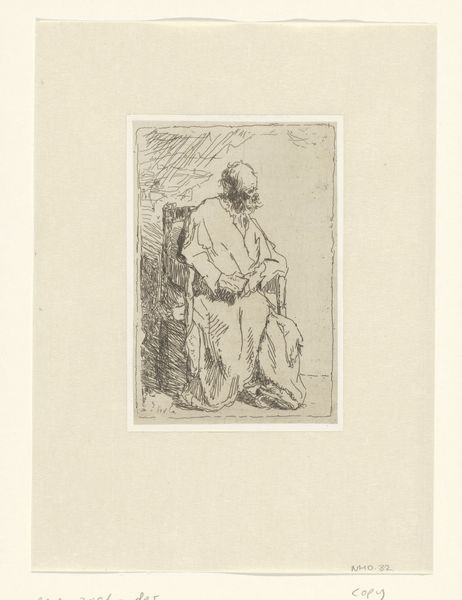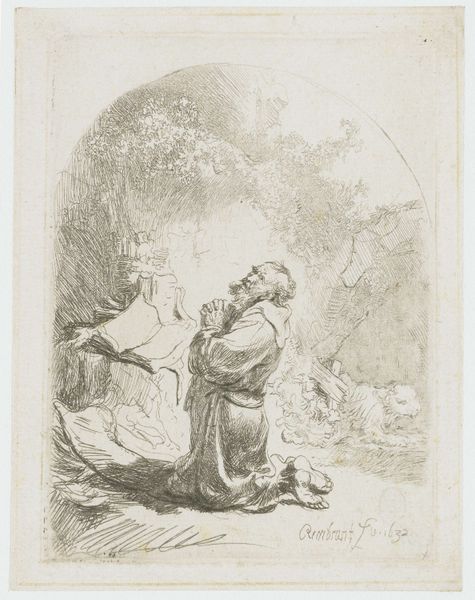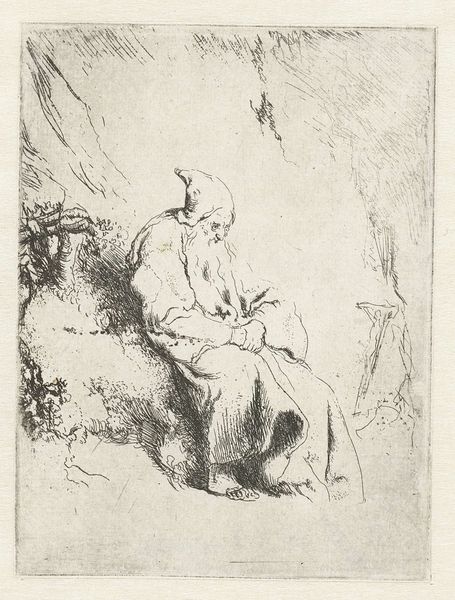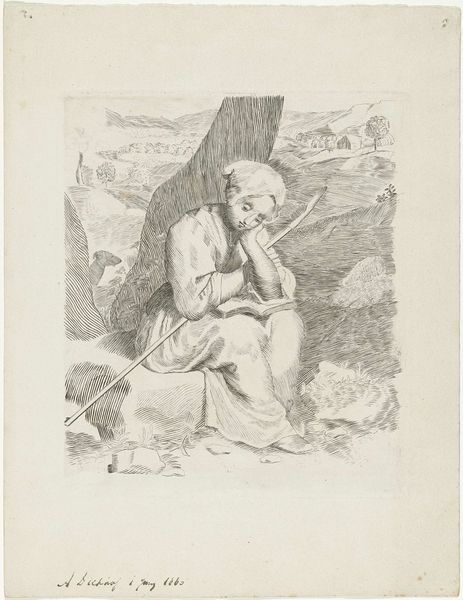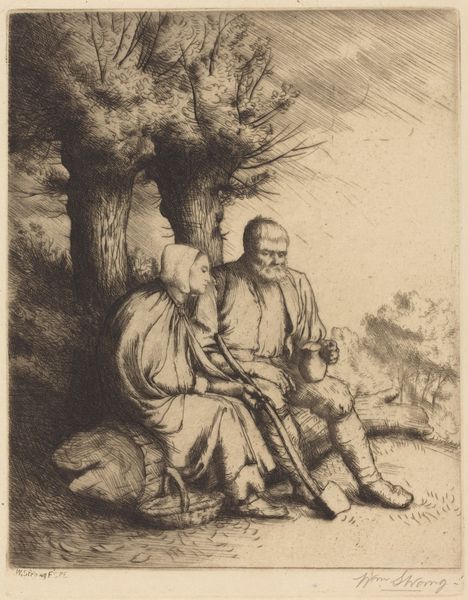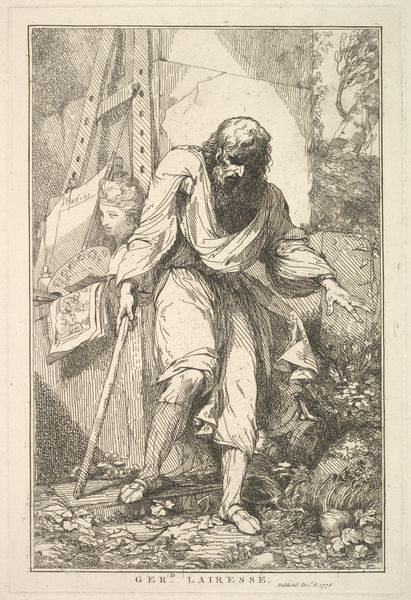
drawing, print, etching
#
portrait
#
drawing
#
narrative-art
# print
#
etching
#
old engraving style
#
figuration
#
history-painting
#
academic-art
Dimensions: height 406 mm, width 253 mm
Copyright: Rijks Museum: Open Domain
Editor: Here we have J. Kuyper's "Old Man Praying by a Rock," an etching from 1862. The detail is remarkable, especially given it's a print. I am intrigued by the tools in the lower right, and am curious about what they tell us. What stands out to you about this print? Curator: The etching technique itself is critical. Consider the labor involved: the repeated, painstaking work of incising lines onto the metal plate to create the image. The varying weight of those lines creates the illusion of depth and light. Is it not craft elevated to the level of fine art, pushing against these restrictive, hierarchical definitions? Editor: Definitely. The craft is evident. But who was Kuyper’s audience here, and what's the purpose of the print in contrast to, say, a painting of a similar subject? Curator: Prints like this from the mid-19th century had a wide circulation due to industrial manufacturing processes. Multiple copies could be produced, democratizing art. Note the religious theme: an old man kneeling. Who is this man and what societal ideals are suggested here by his devotional act, rendered in a highly reproducible format for a potentially broad audience? What labor fueled his belief and sustained his devotion? The inclusion of tools in the immediate foreground reminds me that he likely uses tools. Editor: The reproducibility is really key to understanding the piece. Would the act of worship have different implications to diverse socioeconomic classes? Curator: Precisely. It is also a reproduction and re-creation of faith through industrial methods. It is important to realize that materials such as printing plates may wear down and were at that time typically reworked or re-etched. That fact reminds us to be constantly cognizant of the art production process that enables circulation. What story of spiritual devotion and endurance is this man meant to tell? Does he speak for others like him? And, fundamentally, how is that story shaped by the means of its production? Editor: Seeing it as part of an industrialized, reproductive process makes it more compelling. Thanks, that gives me a lot to consider. Curator: Yes, thinking about the act of creating the reproduction provides further insight into our appreciation for the work as it survives today.
Comments
No comments
Be the first to comment and join the conversation on the ultimate creative platform.
